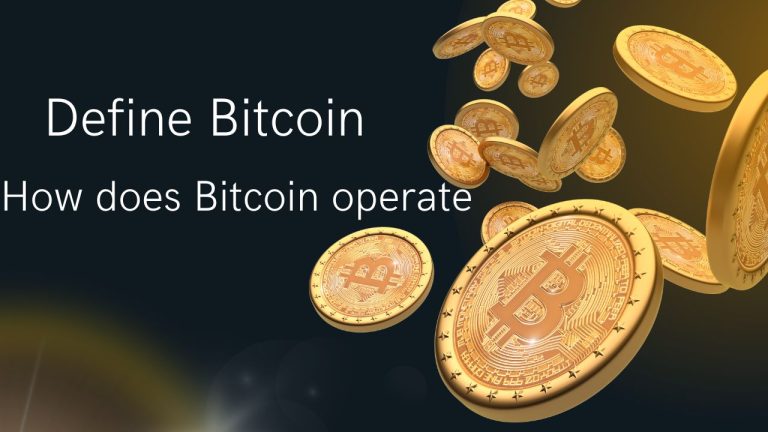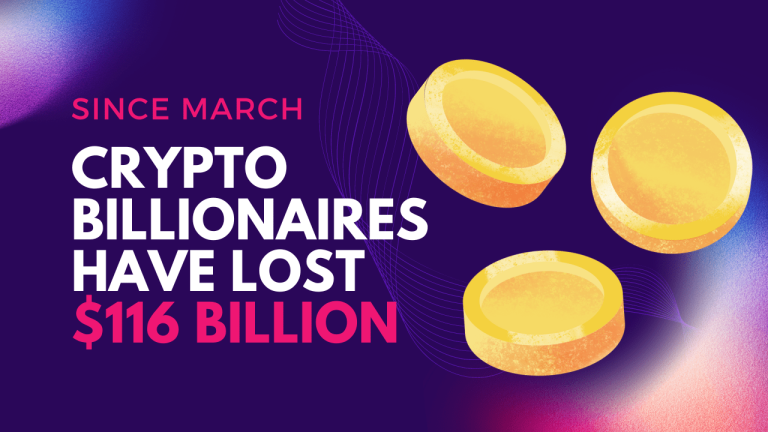Understanding Bitcoin Blockchain: An Introduction to BTC Technology
The Bitcoin blockchain combines the ideas of blockchain and Bitcoin (BTC). A person or group of people going by the moniker Satoshi Nakamoto created the Bitcoin protocol in 2008 to decentralize money management after centralized institutions failed the world. A set of computational guidelines described in a document known as the Bitcoin white paper led to the creation of a brand-new class of distributed databases: the blockchain. In January 2009, the network debuted.
Blockchain technology was developed for the cryptocurrency known as Bitcoin, which is also the most popular one. A cryptocurrency, like the US dollar, is a digital medium of exchange that controls the creation of monetary units and verifies financial transfers using encryption techniques.
Introduction:
In the context of Bitcoin, a “blockchain” is a permanent “chain” of links connecting the data. A block in Bitcoin is a collection of transactions from a specific time. As the blocks are placed on top of one another, each new block is dependent on the ones before it. As a result, a chain of blocks is formed, which is what the term “blockchain” refers to.
Every time a new block is introduced, the prior blocks become immutable. This both ensures that every block is more secure over time and shows how Bitcoin technology is changing how money is exchanged in the banking and financial industries.
Yet, the Bitcoin blockchain is much more than just a form of money: It is the foundation upon which the majority of cryptocurrencies, including Bitcoin, are created. The Bitcoin blockchain is unique because it ensures the validity of every transaction. Nothing is missed from the network since everything that happens on the blockchain is recorded. The whole record of action is accessible to anyone in the system once it has been time-stamped, recorded, and saved in one of the information blocks. The Bitcoin blockchain is also decentralized; it is not maintained by a single master computer or under the control of a single organization. It is dispersed over numerous computers connected to the network.
The blockchain for Bitcoin has hash codes. The hash of every block in the blockchain is unique. Hashing makes it possible for every network user to recognize each block and directs them to go up the chain because each block contains both its hash and the hash of a previous block.
The blockchain’s records, block, hash, and chain components are essential in light of the latter. The blockchain has two different types of records: block records and transactional records. A block contains the most recent Bitcoin transactions that weren’t yet included in the previous block. Transaction records contain information about the assets, their prices, and their owners that are instantly approved, settled, and recorded across all nodes.
On the blockchain network, a block is similar to a page in a ledger or record book, a chain is a collection of linked blocks, and a hash is essentially a fixed-length string produced after transforming any length of input data.
An Overview of the Bitcoin Blockchain
The idea of blockchain technology was first put forth by Stuart Haber and W. Scott Stornetta in their article “How to Time-Stamp a Digital Document.” They described how to securely record information via a chain of timestamps in this study.
The main reason for creating Bitcoin BLockchain was to make cryptocurrency exchanges easier. Early adopters and creators quickly realized, however, that it had much more potential. In light of this, they created the blockchain for Bitcoin to store more information than only information about the token’s movement.
By taking ownership of each financial transaction, peer-to-peer (P2P) transactions, a feature of the Bitcoin Blockchain technology, allow it to function independently of banks or other third parties. It makes it possible for parties to send money to one another directly via the Internet without a financial institution.
Peer-to-peer refers to a network in which all computers are equal, where there are no “special” nodes, and where the responsibility for delivering network services is shared by all nodes. Many Bitcoin blockchain nodes operate in thousands to execute the protocol. The protocol must establish and maintain the blockchain.
Peer-to-peer networks can be created because users are responsible for keeping the distributed network up and running and their data is connected to the person or thing they are engaging with. Peer-to-peer Bitcoin interaction then transfers the data about the person or thing from their Bitcoin wallet to their physical location and IP address.
What conditions must be met for the Bitcoin blockchain to run?
Bitcoin is both a digital, trustless form of money and a movement towards decentralized financial services. Before Bitcoin, a trusted third party was required to maintain a ledger, which is a database of a company’s or person’s financial information, to track who owned what and how much. Since everyone on the Bitcoin blockchain network has a copy of this ledger, third parties are not required.
The Bitcoin blockchain network, the online space where hash power generation and mining take place, is where every other Bitcoin transaction takes place. Hashing power is the amount of processing power your computer or other hardware uses to execute and crack various hashing algorithms. These algorithms are used to create new cryptocurrencies and make it possible to trade between other cryptocurrencies.

Bitcoin users frequently purchase their supply of bitcoins on a cryptocurrency exchange, a website that enables the trading of Bitcoin and other cryptocurrencies. A decentralized ledger makes up the blockchain network. This last example shows that Bitcoin is both a piece of software and a network of connected processes where users perform different tasks.
A blockchain is a collection of interconnected computer systems that houses a digital log of transactions throughout time. A copy of each new transaction that occurs on the blockchain is recorded in the ledger of each participant. Many transactions are contained in each block of the chain.
The technology known as distributed ledger technology is used by many users to manage this distributed database (DLT). The blockchain kind of DLT uses hashes, an immutable cryptographic signature, to record transactions. The transactions are then organized into blocks. A chain of blocks connected by the fact that each new block contains a hash of the preceding one is referred to as a “blockchain.
The blockchain functions as a ledger, recording each Bitcoin transaction and self-verifying, which means that the network’s nodes the various computers that make up the network constantly monitor and safeguard each transaction. The “miners“ enter the fray at this point: They receive Bitcoin as compensation for the labor-intensive work that their computers perform in maintaining the chain. Together, these guidelines make up the Bitcoin protocol.
The term “miner” refers to a powerful computer that generates bitcoins by solving difficult mathematical problems. The network-specific devices known as miners, which also block any fraudulent actors, verify all transactions. The goal of Bitcoin mining is to gather as many transactions as possible into a block, mathematically validate the block, and then add the block to the previous block’s chain. To supply the network with its processing power, miners are paid in newly minted Bitcoin.
How does the blockchain for Bitcoin operate?
A database is a collection of information stored electronically on a computer system. To make finding and filtering easier, databases frequently organize the information or data they contain in a tabular structure. Because of the way databases are made, huge amounts of data may be quickly and easily accessed, filtered, and edited by many people at once.
Large databases are used to do this by storing data on servers made up of powerful computers. Many PCs can be used to build these servers. Why? allowing several users to access the database simultaneously and having the appropriate computing power and storage. To give an example, this separates a disc with cloud-like storage from a database.
A database and a blockchain differ in the following ways. The first distinction is in the way data is organized. While a blockchain accumulates information groups, known as blocks, that comprise data sets, a database organizes data into tables. Each block contains a particular amount of storage that, as it is filled, is chained onto the previously filled block to create a chain of data.
The blockchain was created by connecting millions of data-filled blocks in a chain. According to this approach, every blockchain is a more complicated database because, when used in a decentralized system, it produces an irreversible chain line of data. As a block is filled, it becomes immutable and a part of a timeline, giving each block on the chain a specific timestamp when it is added to the chain.
As a result, the blockchain intends to make it possible for digital information to be distributed and recorded, but not edited. Because it cannot be modified once it has been filled and chained, it cannot be considered a database per se. Bitcoin’s launch helped blockchain technology gain popularity.
lowering hazards
The use of a blockchain network has a lot of advantages. The accuracy of the chain comes first. The blockchain demands that millions of computers authorize all transactions before they can be used. Because there are no people involved in the verification process, there are fewer human errors and the data is recorded with greater accuracy.
But what if one of the network’s computers makes a computational mistake? The error would only be present in one copy of the blockchain. It would need at least 51% of the network committing the same error for it to propagate, which is exceedingly improbable.
Another benefit of blockchain is that it does away with the requirement for independent verifiers. The blockchain may always be checked and verified by any Bitcoin network user.
Since blockchain data is decentralized, it is distributed throughout a huge network of computers rather than being kept in a single location. As a kicker, for instance, would require access to all of the networks to fully compromise the data, and it becomes incredibly difficult for anyone to tamper with it.
The fact that no one can access identifying information about the users who are conducting those transactions is another key feature of the blockchain. Anyone with an internet connection can access transaction details and the history of transactions on the network. Anyone with an internet connection may view the history of transactions on the network and access specifics about transactions.
Additionally, the network, which is made up of thousands of computers, verifies each transaction once it is recorded to ensure that the information about the purchase is accurate.
Banking versus. blockchain
Since blockchain is completely decentralized and depends on thousands of computers to validate its transactions, it functions significantly differently from a regular bank. This means that it is operational 365 days a year. The transparency of the whole Bitcoin blockchain, which serves as a public ledger for every transaction carried out in the Bitcoin network, is by far its most important benefit.
Additional distinctions include the fact that, depending on network congestion, transaction speeds might range from 15 minutes to more than an hour. Whereas check deposits and card payments might take anywhere between 24 and 72 hours.
Variable fees on the Bitcoin blockchain often range from $0 to $50. While the cost is unrelated to the amount being transferred, it is decided by the current network conditions and the amount of data in the transaction. The maximum number of transactions that can be included in a single block on the Bitcoin blockchain is one million bytes (MB).
Another unique approach to conducting trades. Whereas banks require you to have an account, a mobile device, or a computer, the blockchain lets anybody with an internet connection make transfers.
Blockchain technology is a major disruptor of traditional banking and finance because of all these disparities. These are immutable, decentralized, tamper-proof chains that not only cut costs but also produce an open network where users can feel secure and empowered.
Limitations of blockchain technology
Although it has many advantages, the blockchain does have drawbacks, just like everything else. First, when there are too many users on the network, the blockchain may sluggishly operate. Its consensus working method makes scaling it more difficult.
A further drawback of the blockchain is that once a block has been created, it cannot be changed because the data is unchangeable. Some people would consider it to be a copy that needs users to keep their wallets or else they risk losing access, meaning that it demands self-maintenance.
The fact that blockchain technology is still in its infancy is a major constraint. Also, it is challenging to incorporate into legacy systems and doesn’t allow compatibility with other blockchains and financial systems.
Technical developments
Thunderbolt Network
Participants can use their digital wallets to send and receive Bitcoin for free utilizing the Lightning Network (LN). Off-chain transactions, also known as blockchain transactions, are made possible by the addition of a second layer to the Bitcoin network. Without affecting the decentralization or security of the primary blockchain, a second layer increases throughput.
Off-chain transactions are made possible by Lightning Network, which establishes payment channels between two users in a distributed database so they can do business without the knowledge of the other users.
Since it was created to expedite transaction processing and lower related expenses of the Bitcoin blockchain, it is regarded as a game-changer in the cryptocurrency sector. It was designed and activated after being conceived in 2015.
But, experts have issued a warning that if the Lightning Network expands, it may turn into a more alluring target for attackers. If users on the emerging payment network aren’t attentive, Bitcoin could be stolen, and it might be challenging to guarantee the security of assets in the future.
The roughly $9 million in Bitcoin that is now trapped in the Lightning Network payments channel, according to academics from the Hebrew University of Jerusalem, could be stolen by attackers. Although the problem might be significant, the researchers are certain that it can be fixed in the long run.
Segwit
Segregated Witness, often known as SegWit, is a procedure modification in how Bitcoin keeps track of transaction information in the blockchain. Segregate is to separate, and the transaction signatures are witnesses. It was developed to modernize the manner in which data is kept on the blockchain of Bitcoin. As a result, transaction throughput on the network is increased since more transactions can be stored in a single block. When the source code for the update was made public in 2015, SegWit started functioning on Bitcoin in August 2017.
SegWit increases a blockchain’s maximum block size by removing the signature data from Bitcoin transactions. As parts of a transaction are eliminated, both space and the capacity to add more transactions to the chain are boosted.
SegWit not only increased the speed at which Bitcoin processed transactions, but it also fixed a protocol flaw that allowed nodes to manipulate TXIDs, or transaction malleability concerns, on the network. Segwit enhanced the number of transactions that could fit in a block and corrected the transaction malleability vulnerability by removing what is referred to as “signature data”.
In August 2017, a soft fork on the Bitcoin network released the SegWit update. Soft fork updates that are backward compatible permit communication between upgraded and un-updated nodes. New rules that do not clash with the existing ones are typically included in soft forks. Nevertheless, on November 8, 2017, the upgrade was suspended because maintaining a node is expensive (particularly in underdeveloped nations).
Taproot
Greg Maxwell, a developer of the Taproot Bitcoin Core, first suggested the Taproot upgrade in January 2018. Three years later, on June 12, 2021, the 90% mark for blocks mined with miner support was reached. It means that some encoded data was left in 1,815 of the 2,016 blocks that were mined during the two weeks by miners to show support for the upgrade.
Improved scripts in the Taproot soft fork of Bitcoin strengthen network anonymity and privacy. When a user doesn’t use Taproot, transactions can be seen by everyone. They can “mask” their transactions when utilizing Taproot. Even the fact that a Bitcoin script even executed at all can be concealed using Taproot. In October 2020, Taproot and the Bitcoin Core library were combined.
The current elliptic curve digital signature method used by Bitcoin is one of the most significant changes to the network substitution of Schnorr signatures (ECDSA). It is impossible to deduce a private key from a Bitcoin address or public key thanks to the ECDSA algorithm, which creates public keys from randomly generated private keys. Also, the Schnorr signature will make transactions faster and smaller, freeing up space and bandwidth on the Bitcoin network.
The Schnorr signature can aid in the simplification of complex smart contracts on the Bitcoin blockchain by allowing discrete log contracts (DLCs). The DLCs are a plan to integrate smart contracts into Bitcoin, enabling the creation of straightforward, secure, and user-friendly blockchain oracles.
Scalability may also be advantageous for layer-two payment channels like the Lightning Network, which permits instantaneous transactions on the Bitcoin network.
FAQS
What is the Blockchain technology behind Bitcoin?
It is based on a decentralized computer network known as a blockchain that records all transactions involving the currency. A proof-of-work technique is used by Bitcoin to authenticate transactions and record them on the blockchain. The most well-known cryptocurrency is Bitcoin, which was the first to be invented.
What does blockchain mean in plain English?
A sophisticated database system called blockchain technology enables transparent information sharing inside a company network. Data is kept in blocks that are connected in a chain and stored in a blockchain database.







